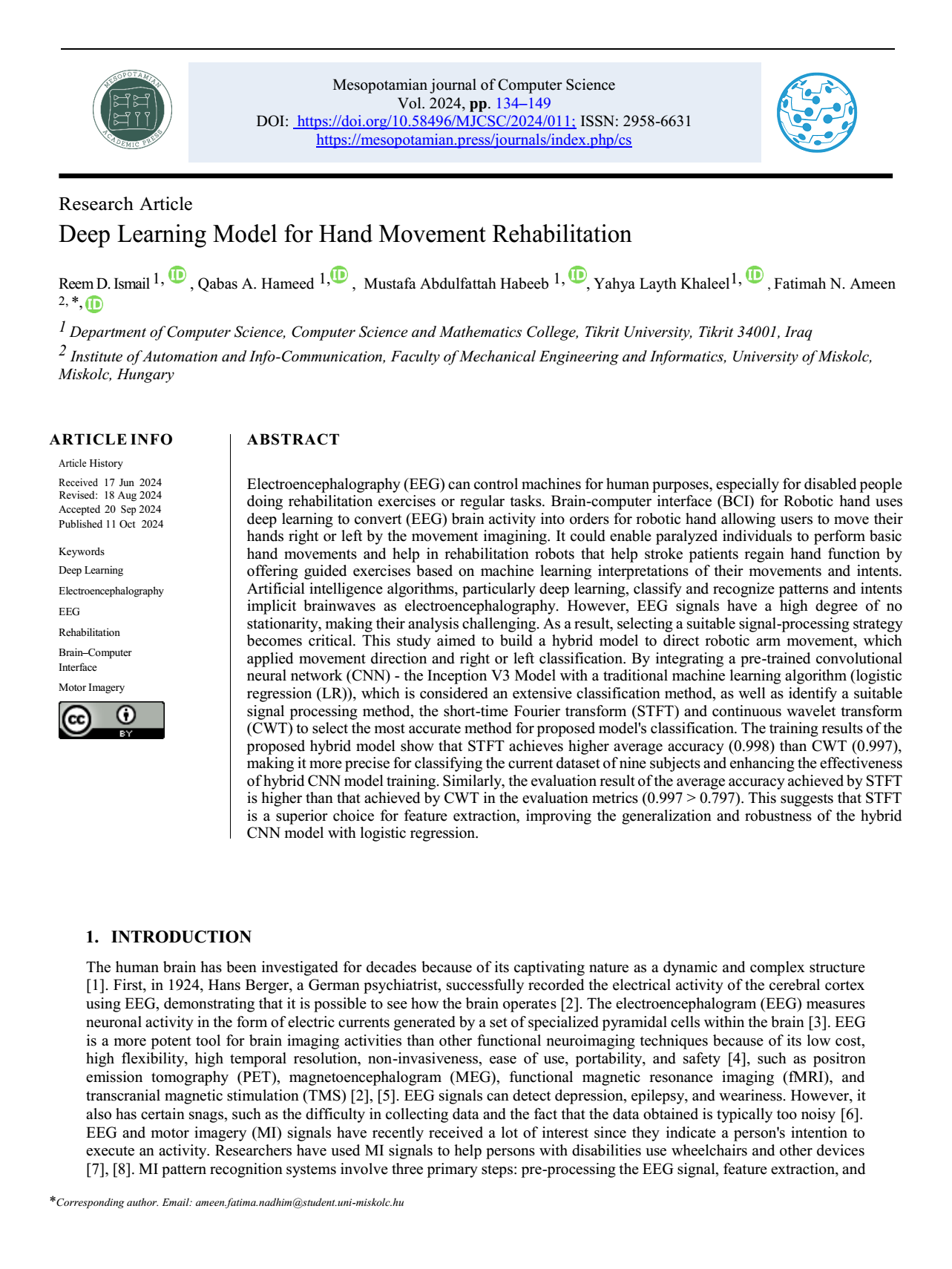Deep Learning Model for Hand Movement Rehabilitation
Main Article Content
Abstract
Electroencephalography (EEG) can control machines for human purposes, especially for disabled people doing rehabilitation exercises or regular tasks. Brain-computer interface (BCI) for Robotic hand uses deep learning to convert (EEG) brain activity into orders for robotic hand allowing users to move their hands right or left by the movement imagining. It could enable paralyzed individuals to perform basic hand movements and help in rehabilitation robots that help stroke patients regain hand function by offering guided exercises based on machine learning interpretations of their movements and intents. Artificial intelligence algorithms, particularly deep learning, classify and recognize patterns and intents implicit brainwaves as electroencephalography. However, EEG signals have a high degree of no stationarity, making their analysis challenging. As a result, selecting a suitable signal-processing strategy becomes critical. This study aimed to build a hybrid model to direct robotic arm movement, which applied movement direction and right or left classification. By integrating a pre-trained convolutional neural network (CNN) - the Inception V3 Model with a traditional machine learning algorithm (logistic regression (LR)), which is considered an extensive classification method, as well as identify a suitable signal processing method, the short-time Fourier transform (STFT) and continuous wavelet transform (CWT) to select the most accurate method for proposed model's classification. The training results of the proposed hybrid model show that STFT achieves higher average accuracy (0.998) than CWT (0.997), making it more precise for classifying the current dataset of nine subjects and enhancing the effectiveness of hybrid CNN model training. Similarly, the evaluation result of the average accuracy achieved by STFT is higher than that achieved by CWT in the evaluation metrics (0.997 > 0.797). This suggests that STFT is a superior choice for feature extraction, improving the generalization and robustness of the hybrid CNN model with logistic regression.
Article Details
Issue
Section

This work is licensed under a Creative Commons Attribution 4.0 International License.
